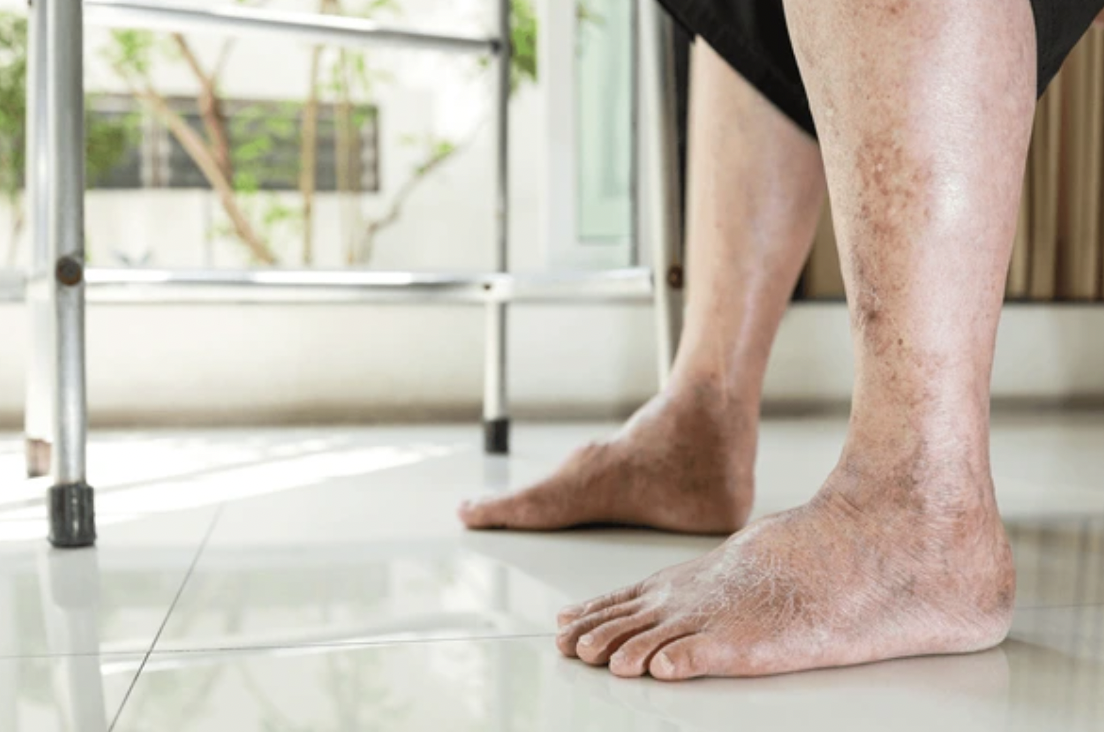People with sedentary lifestyles are more prone to develop multiple healthcare issues, such as heart disease, musculoskeletal problems, and diabetes. Diabetes is a pretty common condition worldwide, and there are multiple ways to manage it effectively. But, if left untreated, it can lead to kidney failure, which results in a life-threatening situation.
Moreover, adopting healthy lifestyle modifications can reduce your risk of getting diabetes. However, how fast should you walk for diabetes prevention? This article shares in-depth information regarding walking speed and diabetes to minimize your chances of getting this disease.
What Is Diabetes?
Diabetes is a metabolic health condition that affects your body’s ability to process energy out of food. When you take any type of diet, your system breaks it into glucose, which is then transported into your bloodstream.
Consequently, your blood sugar rises, stimulating the pancreas to produce insulin. Insulin is a regulatory hormone that normalizes the glucose concentration in the blood for its optimum use.
When you’re suffering from diabetes, you have either an insufficient amount of insulin or your body can’t process insulin. This leads to an increased amount of glucose in your bloodstream, and it is often known as hyperglycemia.
If your body remains in a hyperglycaemic state for a longer period, it may cause numerous health complications, such as vision issues, nerve damage, cardiac disorders, and stroke.
Can Diabetes Be Cured By Walking?
Yes, diabetes can be managed by walking. A walk for diabetes helps improve its symptoms and prevents its long-term complications.
Moreover, there is a link between walking speed and diabetes. People who walk quickly tend to have a better chance of managing diabetes regardless of how many meters they’ve covered.
You can start walking slowly to develop a daily walking habit. Remember to wear good running shoes or trainers to support your foot arches to minimize heel pain during walking.
How Much Risk Has Been Lowered Through A Walk For Diabetes?
According to a recent study, the pace of your walk does affect your risk of developing diabetes.
Following are some of the findings that may help you to lower your diabetes risk:
- A walk for diabetes for 2 to 3 miles or 3.2 to 4.8 kilometers per hour tends to decrease 15% of your chances of developing type 2 diabetes, irrespective of how much time you’ve consumed for strolling.
- A fairly brisk walking for diabetes at above 4 miles or 6.4 kilometers per hour aids in lowering your risk of getting type 2 diabetes by 39%. It also equals to 2.24 fewer reported cases of diabetes in every 100 individuals.
- Furthermore, adding 1 km of pace to your diabetes walking speed results in reducing the risk of this condition by 9%.
In addition, physically inactive people are more likely to get diabetes. Physical inactivity restricts your muscles’ capacity to convert glucose into energy, reducing muscle mass. Therefore, engaging in physical activity such as a walk for diabetes promotes your muscle glucose utilization, ultimately resulting in controlled blood sugar, decreased inflammation and better well-being.
How Can I Plan My Walk For Diabetes?
If you are newly diagnosed with diabetes, you may have many doubts regarding how to plan your walk. Following is the step-by-step guide to structure your diabetes walk without any health complications:
Select A Park Or Jogging Track
Before going for a diabetes walk, you need to select a location, such as a park or jogging track. If you’re unable to find a perfect spot, you can walk on the lawn of your home. Just pick a spot with a smooth surface to avoid any injuries or falls during your walk. Also, you should take your water, glucometer, and pedometer to evaluate the footsteps and time you spend while walking.
Monitor Your Vitals
The next time is to monitor your vials and note it down somewhere. You should first evaluate your blood glucose levels through a glucometer. Then, you should record your heart and oxygen saturation with the help of an oximeter. Do not walk further if your oxygen saturation is less than 95 percent. Furthermore, if you have a resting heart rate of over 150, consult your healthcare provider before beginning your walk.
Go for Warm-ups
Once you’ve monitored your vitals, the next step is to start warm-up exercises. These exercises include basic neck, upper limb, back, and lower limb stretches. Repeat every stretching exercise ten times. Warm-up exercises prepare your body for a physical activity and prevent any injury or mishap.
Start Your Walk Slowly
If you haven’t walked for a while, you should begin your walk slowly. For the first time, try to talk for a few minutes without getting yourself fatigued. It will get easier for you to walk for long periods when you get habitual to this practice. Once you get comfortable walking short distances, you can increase the intensity by adding time, distance, and pace to your activity.
Adjust the Intensity Of Your Walk
You can adjust the intensity of your walk depending on your threshold. For instance, if you cannot walk for 30 minutes in one slot, try to split it into two halves. Walk for 15 minutes in the morning or evening. Or you can plan a 10-minute walk three times a day. Always use a footstep tracker to record the time, pace, and distance you’ve covered. Once you can bear the current intensity of your walk, add 5 to 10 minutes more to your activity every week.
Perform Cool Down Exercises
After completing your walk, don’t hurry back to your home before performing cool-down exercises. Cool down is somewhat similar to warm up. It contains light neck, back, upper limb, and lower limb stretching exercises. It helps to bring a cooling effect to your stimulated body and adjust it to the current temperature.
Record Your Vitals After Walk
Once you have completed cool down exercises, the last time to record your vitals again. Record your heart rate and oxygen saturation with the help of an oximeter. Don’t get anxious if you see an increased heart rate and low oxygen saturation. It’s normal to have these responses after doing physical activity.
In the end, monitor your blood glucose; it tends to get low after indulging in a walk. However, if you feel dizzy during a walk, stop your physical activity immediately, monitor your vitals, and report it to your doctor to assess your health.
How Fast Should I Walk For Diabetes?
So far, there is no optimum speed mentioned for a walk for diabetes. However, fairly brisk and brisk walking, regardless of the total duration of the physical activity, helps you lower the risk of diabetes.
In addition, you should walk as fast as you can to improve your health. Faster walking speed assists in elevating your heart health and strengthens your muscles. Also, brisk walking aids you in losing weight, which facilitates insulin sensitivity that ultimately leads to a lower risk of getting diabetes.
What Is The Best Time To Walk For Diabetes?
The best time to walk for diabetes is a 2-minute light walk after eating. It assists in lowering your blood sugar and decreases your chance of getting type 2 diabetes.
Also, it’s recommended to walk for at least 60 to 90 minutes after having a meal. During an hour after consuming a meal, your blood sugar tends to spike; therefore, performing physical activity in this time frame reduces your risk of developing diabetes.
Also, light-intensity walking for diabetes after having a meal plan results in a more subtle rise and fall in blood glucose levels when compared to standing and sitting.
In addition, light-intensity walking after eating assists in blood sugar and blood pressure levels in obese people. It also positively affects obese people’s insulin concentration in the bloodstream.
What Are The Additional Benefits Of Walk For Diabetes?
Low-intensity walking after eating a meal plan offers additional benefits to your heart apart from reducing your risk of getting diabetes. Following are some of the advantages of brisk walking:
- Brisk walking promotes the movements of the intestines and facilitates your digestion
- It also eliminates toxins from your body and drains lymphatic fluid into your bloodstream
- It boosts your circulation by pumping fresh blood to all of your extremities
- Walking for a few minutes daily improves your mental health and stimulates the release of dopamine, oxytocin, serotonin, and natural endorphins, reducing stress hormone concentration in your body.
- It burns your fat cells by increasing your metabolism and keeping your heart rate in a lower-intensity zone while reducing the production of the cortisol hormone.
- Brisk walking aids in lowering your inflammation by inhibiting the release of stress hormones.
How Can I Walk Fast?
Walking at a faster pace helps in reducing the risk of diabetes. However, to walk at a higher speed, you need to follow these tips:
- Wear athletic shoes or trainers to support your foot arches during walking
- Engage in 5 to 10 warm-up exercises to boost the speed of your walking
- Walk with the higher stride length, keep your body straight, and maintain your arm swings to increase your pace
- Track your footsteps and miles with an app to facilitate your walking speed
The Bottom Line
Diabetes is one of the most prevalent diseases all over the globe. It causes your blood sugar to get higher due to the absence of insulin hormones or an inability of your receptors to detect insulin in your body.
Diabetes can lead to multiple health complications, such as stroke and kidney failure. There are many ways to prevent this debilitating condition. However, low-intensity walking after having your meal plan reduces your risk of diabetes and improves your overall well-being.
This content is for informational and educational purposes only. It is not intended to provide medical advice or to take the place of such advice or treatment from a personal physician. All readers/viewers of this content are advised to consult their doctors or qualified health professionals regarding specific health questions. Neither Abraham Parker, nor the publisher of this content takes responsibility for possible health consequences of any person or persons reading or following the information in this educational content. All viewers of this content, especially those taking prescription or over-the-counter medications, should consult their physicians before beginning any nutrition, supplement or lifestyle program.


